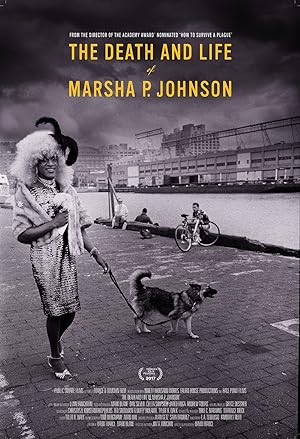If you are going to watch The Death and Life of Marsha P. Johnson, first watch Pay It No Mind: The Life and Times of Marsha P. Johnson on YouTube, which may not have as professional production values as the Netflix documentary, but does a far better job of centering the historical titular person instead of using her as a jumping off point to explore issues faced by the transgender community.
Especially after watching Twenty Two, I was disappointed that The Death and Life of Marsha P. Johnson’s title accurately reflected what the filmmakers’ considered most important in its content: her death. Twenty Two showed how to depict the dignity and humanity of its subject without diminishing the suffering. I am one of the few Netflix customers who have not become enthralled by its true crime documentary series such as Making A Murderer. I heard enough from detractors that these documentaries always have a slant towards suspense over facts and not letting a little thing like cat murder get in the way of telling the story that they want to tell. While I applaud the rigor and creativity that it takes to sculpt real life events into a cohesive and entertaining narrative, I prefer to tackle the messy, textured details of awkward reality. This documentary tries to create suspense by framing the story as a murder mystery.
With the ludicrously high murder rates of transwomen of color, The Death and Life of Marsha P. Johnson is not innately wrong to choose that approach. I think that there is nothing wrong with questioning whether or not she committed suicide. This choice leads to many great moments such as a depiction of the work done by the Anti Violence Project and raises awareness that violence against transwomen is still occurring. Unfortunately the documentary does take us on a bit of a wild goose chase that sounds more like hot conspiracy takes on who shot JFK and little interest in what actually happened to Johnson. Asking if it was a trans or homophobic mob is fair, but theorizing whether it was the literal mob because Randy Wilder, the person that she lived with, who is now elderly, railed against them is a reach with little to no objective supporting evidence. When he started crying at the possibility, I was horrified because this person does not need to feel guilt after years of financially supporting Johnson and keeping her memory alive. It was exploitive and disgusting. Also I think that the filmmakers confuse sinister motives with bureaucratic incompetence, irritation and general government personnel disinterest over being overwhelmed, which is more frightening. Injustice from indifference needed to be emphasized more.
The Death and Life of Marsha P. Johnson also whitewashed Johnson’s relationship with the broader LGBTQ community. Initially the film made it seem like gay men accepted her as their queen though later interviews with Sylvia Rivera rectified this rosy image. The movie has a lot of dead naming and misgendering with no attempts to correct it. Since this documentary will probably be the first experience that people have with issues that the trans community faces, viewers may mistakenly believe that such behavior is acceptable. The filmmakers also omit Johnson’s struggles with mental disabilities, which is a germane factor in determining whether or not she committed suicide.
The Death and Life of Marsha P. Johnson does succeed at assembling archival footage and depicting other transwomen’s lives. After watching Pay It No Mind: The Life and Times of Marsha P. Johnson, it was a great opportunity to finally see Johnson’s funeral procession. Victoria Cruz is the star of the documentary as the lead investigator on the case and provides a portrait of what life could be for all the transwomen of color if they could live a long life while gainfully employed and accepted into a community. As the documentary unfolds, it gives us more details about Cruz’s journey.
In Pay It No Mind: The Life and Times of Marsha P. Johnson, Rivera is referenced briefly in a photograph, and Johnson praises her as her mentor in fighting for transrights. The Death and Life of Marsha P. Johnson finally gives us an opportunity to see and hear from Rivera, and her story is a mixture of inspirational, bitter and tortured survival. Rivera is a closer foil to Johnson than Cruz. Unfortunately the Netflix documentary adheres closer to the true crime format than a portrait of revolutionary foremothers. There is a crucial missed opportunity when Cruz visits Miss Kitty while the latter is incarcerated. We don’t know anything about her or why she is in there. She knew Johnson, and I suspect her story is potentially as intriguing as Rivera’s. In a cursory Google search, she is misgendered, characterized as a gentle giant and has a long rap sheet of nonviolent crimes.
I really wanted to like The Death and Life of Marsha P. Johnson, and while I think that it is worth watching to learn more about historically notable and living transwomen, it is far too exploitive by privileging the true crime documentary format and reducing a life to one, final moment instead of all the moments preceding the end. These portraits are important because it shows that when society refuses to accept people by, for example, giving them gainful employment, they end up in situations, which may not be commensurate with where they would be without barriers.
Stay In The Know
Join my mailing list to get updates about recent reviews, upcoming speaking engagements, and film news.





